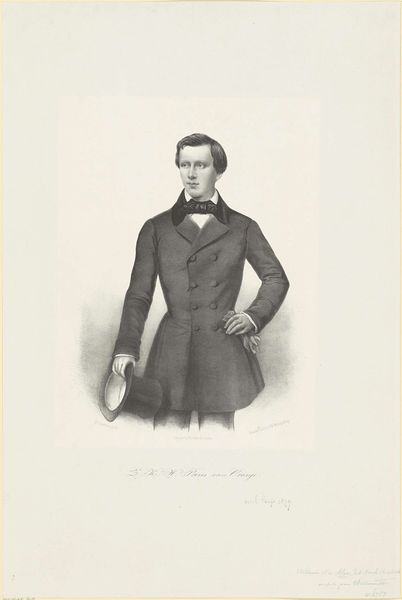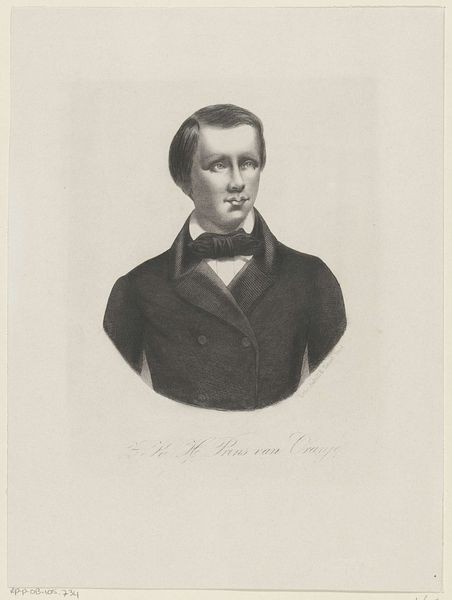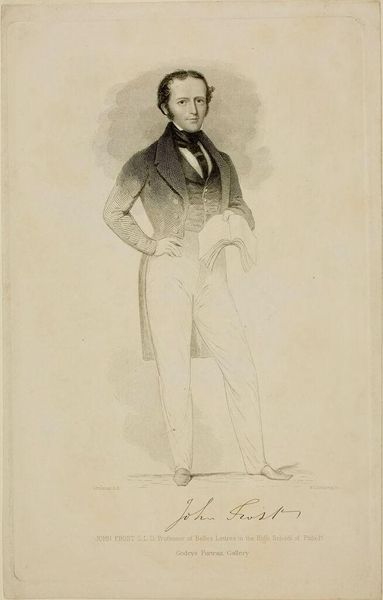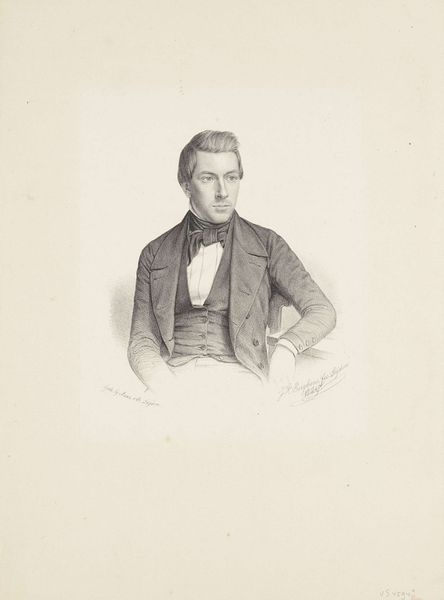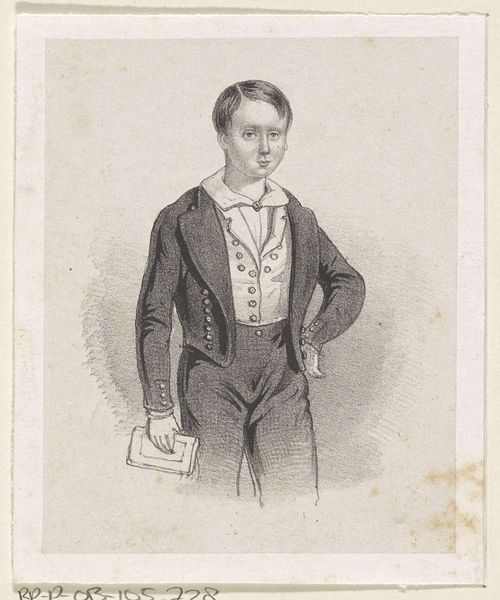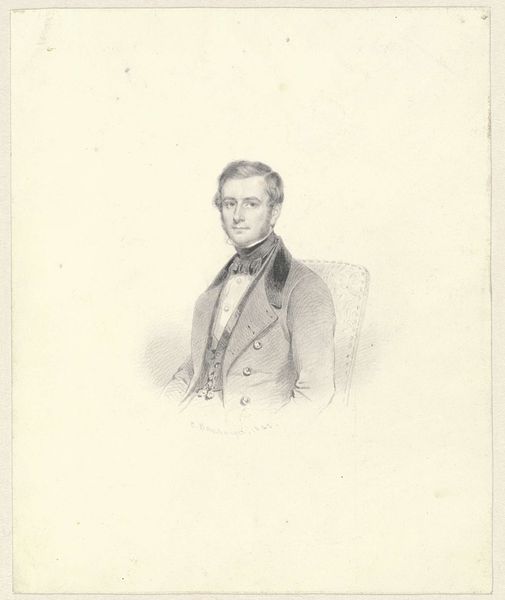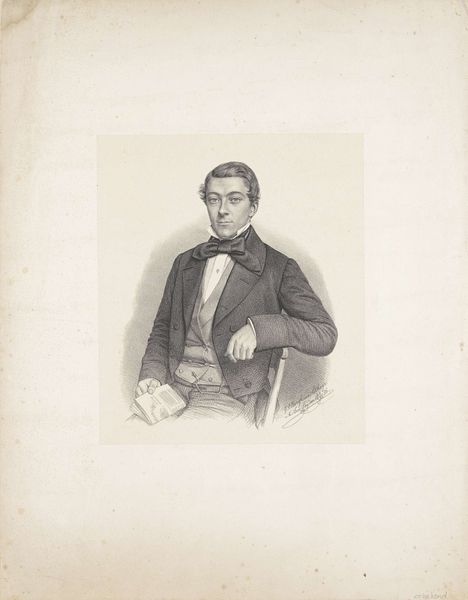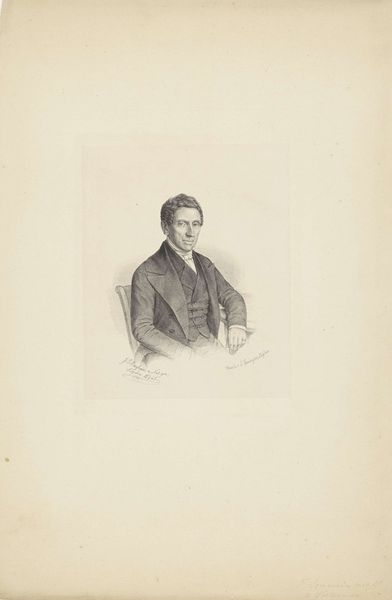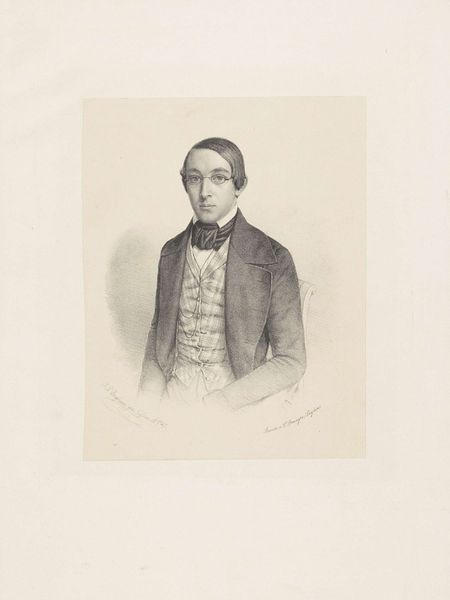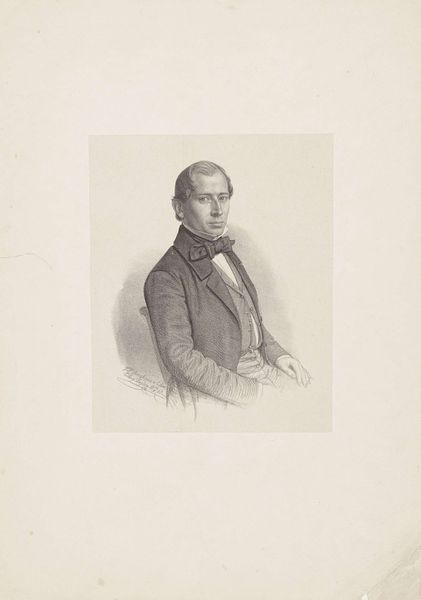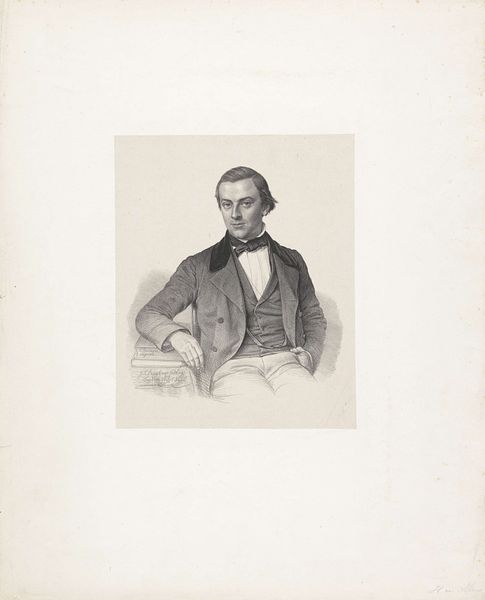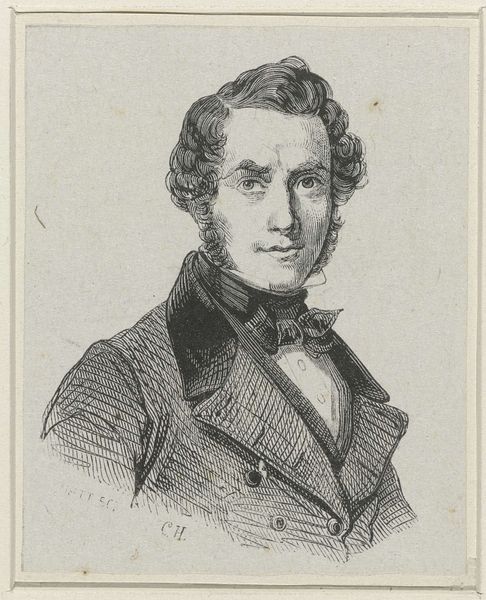
Dimensions: height 464 mm, width 358 mm
Copyright: Rijks Museum: Open Domain
Curator: Here we have a print from 1858, "Portret van Willem, prins der Nederlanden," portraying William, Prince of Orange. Editor: My initial impression is of an incredibly refined and mannered figure, even slightly melancholic. The gray hues create a subdued and almost ghostly presence. Curator: Indeed. If we examine the meticulous engraving, the precise lines and hatching define form and texture. The artist skillfully uses tonal variation to render the prince's attire. Consider how the fall of light emphasizes the set of his jaw, suggesting a regal intensity. Editor: But what's striking to me is the labor behind this relatively commonplace image of nobility. It reminds us of the intricate processes needed to reproduce and disseminate images in the mid-19th century, the collaboration and skill involved in crafting these printed impressions for broader consumption. And what of the paper stock itself—sourced and milled—before being etched and printed with painstaking effort. Curator: An excellent point. Furthermore, this piece adopts several cues from Romanticism, like the dramatic contrasts between light and shadow, highlighting emotion. See how this evokes his dignity and the solemn responsibilities he bore? Editor: Still, seeing it as a reproducible item raises some interesting questions for me. Where was this print sold or distributed? Who purchased or collected it? How many hands touched it, carried it, and ultimately displayed it in homes or institutions? Curator: To appreciate its aesthetic arrangement— the delicate details in his bow tie, for example—helps communicate status. The hat and coat, objects reflecting material culture are also interesting details. He becomes a representative of Dutch aristocracy as such. Editor: Agreed. It’s the tangible record of making this social hierarchy accessible. Curator: Ultimately, this carefully crafted print merges portraiture and societal representation. Editor: Precisely. Looking closely reminds us about its material production and also makes it possible to acknowledge both how an image reflects its time.
Comments
No comments
Be the first to comment and join the conversation on the ultimate creative platform.
